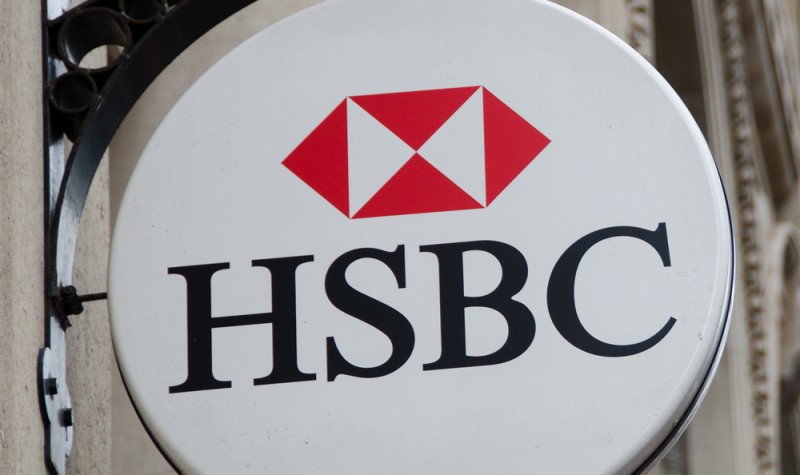HSBC: leaner and meaner

HSBC has done remarkably well for a bank that has most of its business in China and Asia. Moreover, it looks bombed out in valuation terms and appears, on the current share price, to have more upside than downside. I suspect, that even the near term share price is more likely to be up than down, even if modestly so. It is an equity that serious long term investors should have a good look at, in my opinion.
The third-quarter and nine-month figures just published by HSBC (HSBA) were, as usual, encyclopaedic in their minutiae and in their financial excavations, dauntingly a bit like one of those widely scattered, cinematic, archaeological digs for some long lost pharaoh’s tomb in the Valley of the Kings. You need both a telescope and a magnifying glass for the task.
Basically, for the full nine months, you have the picture of a shrinking bank, which is the well understood policy of its management. The plan is to get its riskier assets down in order to trim back regulatory risk (risk weighted assets – to use the jargon) and in due course, boost profits.
One would be forgiven for thinking that the latter objective had been achieved with miraculous speed to judge from the reported statutory increase of 32% in reported profits before tax in the last quarter to September. But this is only one quarter’s figures and they can be distorted when and if big significant accounting items occur in that quarter as they obviously did in the last third quarter. Positive, exceptional, accounting items in one quarter, with none or contrary items the previous quarter can make global bank’s financial reporting dramatic and volatile, which in turn makes it difficult for us punters to reach any hard conclusions. Consequently, I shall concentrate on the nine-month results.
Over the nine months pre tax profits reported in accordance with statutory reporting requirements rose a still significant 16% year-on-year. However, when they are adjusted to take account of significant one off items, they are shown to have been down 3%, not up 16%. Basically, the bank tells us that it has reduced its risk weighted assets by nearly one third of the amount it promises to reduce them by the end of 2017. So, much done and much more to do.
Risk has a financial cost in terms of regulatory requirements from capital provision and regulatory compliance of operations. We see from these accounts that selling risk weighted assets actually adds to such costs during the process. There is an array of such costs arising from transforming the bank’s operations: ring fencing the deposit taking bank; reimbursing customers who have lost out. It’s a bit like trying to get out of a quagmire; the more you struggle to free yourself the more you get stuck in the mud. Regulatory costs in the period were up nearly one third. The bank even had to hire more staff for regulatory and compliance work while it struggles to reach the firmer ground of a less risky asset base. Reported operating costs were 4% lower but adjusted operating costs increased 6%.
In short, the bank struggles on in the direction of a ring-fenced deposit-taking subsidiary in Birmingham and a lower risk cost base overall.
The capital base remains conventionally strong with a slight improvement in the Tier 1 capital figure from 11.6% last time to 11.8% this time. Plain balance sheet leverage likewise improved marginally from 4.9% to 5.0%. The dividend this time was maintained at 30 US cents per share.
The bank reckons that it has done pretty well given all this plus the economic and stock market setbacks in Asia. Asia profit before tax was three times that of Europe and nearly eight times that in North America. We are told that there has been little impact on the bank’s credit rating in Asia, where pre tax profits were solid and up marginally. In contrast, they are shown as down in Europe, North America and the Middle East. That is not perhaps what the market may have expected.
On the question of what the market does expect, the current market consensus estimates register the expectation of a 15% increase in earnings this year to 31st December, with an estimated earnings per share figure of 51.34p, giving an estimated, prospective price to earnings ratio of 9.7 times, which is very low when contrasted to the current FTSE 100 PER of over 18 times. Moreover, the market estimates a dividend yield of a robustly handsome 6.5% this year, increasing to a forecast 6.7% for 2016.
Those ratings make HSBC shares look attractive against the market as a whole. There are other reasons as well. Not least a balance sheet net asset backing (the latest results showed no decrease in the value of net assets) which means that the shares at the current price of 505p are selling at a significant discount to assets – or low price to book value. There is also a way above market average earnings yield of 10%. Furthermore, if the market consensus is right in its estimated 15% increase in earnings this year, the shares look cheap on a PEG ratio of 0.7 for this year.
Like everyone else, I cannot see the future as fact but if the bank succeeds in its tricky mission to cut out risk and become more capital efficient, these ratings carry an implied profitability for shareholders at a future date. On that score, the shares have been moving sideways and I believe, partly because the downside looks limited from here, that the shares are more likely to trend up than down.
Comments (0)